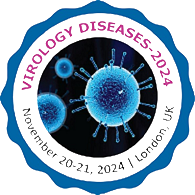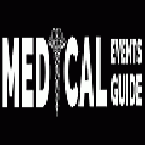Sessions & Tracks
Track-1: Basic Virology
Explore the fundamental principles of virology in this track, where we delve into the intricate world of viruses and their interactions with host organisms. From the molecular mechanisms of viral replication to the structural dynamics of viral genomes, this track offers insights into the essential building blocks of virology.
Join us to unravel the complexities of host-virus interactions, including the role of cellular receptors, immune responses, and viral evasion strategies. Gain a deeper understanding of viral evolution and phylogenetic, exploring how viruses adapt and diversify over time. Learn about viral pathogenesis and the mechanisms underlying disease development, from acute infections to chronic conditions. Whether you're a seasoned researcher or a budding scientist, this track provides a solid foundation in basic virology principles that are essential for advancing our knowledge and combating viral diseases.
-
Molecular virology
-
Viral replication mechanisms
-
Viral genome structure and function
-
Host-virus interactions
-
Viral evolution and phylogenetics
Track-2: Clinical Virology
Dive into the dynamic field of clinical virology in this track, where we explore the intersection of virology with medical practice and patient care. From diagnostic techniques to treatment strategies, this track covers a wide range of topics essential for understanding and managing viral infections. Learn about the latest advances in diagnostic virology, including molecular and serological methods for detecting viral pathogens with precision and accuracy. Explore antiviral therapies and treatment modalities, from traditional drugs to novel biologics and immunotherapies, aimed at combating viral diseases. Gain insights into the epidemiology and surveillance of viral outbreaks, including strategies for outbreak investigation, contact tracing, and containment.
Join us to discover how clinical virology plays a pivotal role in public health preparedness and response, from seasonal influenza to emerging infectious diseases like COVID-19. Whether you're a clinician, laboratory scientist, or public health professional, this track provides valuable insights and practical knowledge for managing viral infections in clinical settings.
-
Diagnosis of viral infections
-
Antiviral therapies
-
Vaccine development and strategies
-
Epidemiology of viral diseases
Track-3: Viral Pathogenesis
Unravel the mysteries of viral pathogenesis in this enlightening track, where we delve into the mechanisms by which viruses cause disease in their hosts. From initial infection to the onset of clinical symptoms, this track explores the intricate interplay between viral pathogens and host cells. Discover how viruses breach host defences, evade immune surveillance, and hijack cellular machinery to establish infection and propagate within the body. Explore the diverse strategies employed by viruses to manipulate host signalling pathways, disrupt cellular functions, and evade antiviral defences. Gain insights into the immunological responses triggered by viral infections, from innate immune activation to adaptive immune memory. Learn about the factors influencing disease severity, including viral virulence factors, host genetics, and environmental factors.
Join us to unravel the complexities of viral pathogenesis and pave the way for the development of novel therapeutics and vaccines targeting viral diseases. Whether you're a basic scientist, clinician, or public health expert, this track offers valuable insights into the mechanisms underlying viral infections and their impact on human health.
Track-4: Viral Genomics and Bioinformatics
Embark on a journey into the realm of viral genomics and bioinformatics in this track, where we explore the genetic diversity and computational intricacies of viral pathogens. Dive deep into the genomes of viruses, unravelling their genetic makeup, and deciphering the molecular codes that govern viral replication, evolution, and pathogenesis. Explore cutting-edge genomic sequencing technologies and bioinformatics tools, revolutionizing our understanding of viral diversity, evolution, and transmission dynamics.
Discover how computational analyses and predictive modelling techniques are reshaping our approach to viral research, diagnosis, and therapeutic development. From viral metagenomics to phylogenetic reconstruction, this track offers insights into the power of genomics and bioinformatics in unravelling the mysteries of viral diseases. Join us to harness the potential of genomic data and computational algorithms in the fight against emerging viral threats and infectious diseases. Whether you're a molecular biologist, bioinformatician, or computational scientist, this track provides a platform to explore the intersection of genomics, bioinformatics, and virology, shaping the future of viral research and public health.
Track-5: Vaccines and Immunization Strategies
Vaccines and immunization strategies are essential tools in preventing infectious diseases by stimulating the immune system to produce protective immunity against pathogens. Vaccines contain weakened or inactivated forms of the pathogen or specific antigens that trigger an immune response without causing illness.
Track-6: Viral Ecology and Evolution
Join us on a captivating journey into the realms of viral ecology and evolution in this illuminating track. Here, we delve into the intricate dance between viruses, their hosts, and the environment, unravelling the mysteries of viral diversity, distribution, and transmission across various ecosystems. Explore the driving forces behind viral adaptation and evolution, from genetic drift to the selective pressures imposed by host immunity and environmental changes. Investigate the fascinating phenomena of cross-species transmission and zoonotic spill over events, shedding light on the origins of emerging viral diseases. Delve into the ways in which human activities, such as urbanization and climate change, impact viral ecology and facilitate the emergence of novel pathogens.
Join us as we unravel the complex tapestry of interactions between viruses, hosts, and ecosystems, gaining insights into the ecological and evolutionary dynamics shaping infectious disease emergence and transmission. Whether you're an ecologist, evolutionary biologist, or public health researcher, this track offers a multidisciplinary exploration of viral ecology and evolution, advancing our understanding of viral dynamics in a rapidly changing world.
-
Environmental virology
-
Viral diversity and ecology
-
Evolutionary dynamics of viruses
-
Zoonotic transmission and spillover events
Track-7: Viral Vaccines and Immunology
Embark on a transformative journey into the realm of viral vaccines and immunology in this pivotal track. Explore the forefront of vaccine development and immunological research, uncovering innovative strategies to combat viral pathogens and bolster immune defences. Delve into the intricacies of viral antigenicity, epitope mapping, and immune recognition, illuminating the molecular basis of protective immunity against viral infections. Discover the latest advancements in vaccine platforms, from traditional attenuated and inactivated vaccines to cutting-edge mRNA and viral vector-based approaches, revolutionizing vaccine design and delivery. Investigate the principles of immune memory and vaccination strategies, including prime-boost regimens, adjuvants, and novel antigen delivery systems, aimed at enhancing vaccine efficacy and durability.
Join us as we navigate the complexities of vaccine development, clinical trials, and regulatory pathways, accelerating the translation of promising candidates from bench to bedside. Whether you're a vaccinology’s, immunologist, clinician, or public health advocate, this track offers a comprehensive exploration of viral vaccines and immunology, paving the way for a future where infectious diseases are conquered through the power of vaccination and immune protection.
-
Vaccine design and development
-
Immunization strategies
-
Vaccine efficacy and safety
-
Immunological responses to viral vaccines
Track-8: Public Health and Epidemiology
Enter the forefront of public health and epidemiology in this pivotal track. Explore the evolving landscape of disease surveillance, outbreak investigation, and community-based interventions designed to protect public health. Delve into the core principles of epidemiological research, unravelling patterns and determinants of disease transmission, spread, and impact within populations. Investigate the pivotal role of public health systems and readiness in mitigating the burden of infectious diseases, from routine immunizations to strategies for pandemic preparedness. Engage with the multidisciplinary aspects of public health, forging connections between epidemiology, biostatistics, environmental health, and social determinants of health.
Join us to address emerging challenges in global health security, including antimicrobial resistance, vaccine hesitancy, and the nexus between infectious and non-communicable diseases. Whether you're a public health professional, epidemiologist, policymaker, or community advocate, this track provides a forum to exchange ideas, share best practices, and collaborate on solutions to advance health equity and resilience worldwide. Together, let's shape the future of public health and epidemiology, ensuring the well-being of communities across the globe.
-
Surveillance of viral diseases
-
Outbreak investigation and control
-
Pandemic preparedness
-
Public health interventions for viral diseases
Track-9: Coronavirus Disease (COVID-19)
COVID-19 is a highly contagious respiratory illness caused by the novel coronavirus SARS-CoV-2. It was first identified in Wuhan, China, in late 2019 and has since evolved into a global pandemic. COVID-19 primarily spreads through respiratory droplets and contact with contaminated surfaces.
Track-10: Therapeutics and Antiviral Agents
Embark on an enlightening journey into the realm of therapeutics and antiviral agents in this pivotal track. Explore the forefront of drug discovery, development, and clinical application, unveiling innovative strategies to combat viral infections and alleviate disease burden. Delve into the molecular mechanisms of viral replication and pathogenesis, uncovering vulnerabilities and targets for therapeutic intervention. Investigate the latest advancements in antiviral drug design, from small molecule inhibitors to biologics and gene-based therapies, revolutionizing treatment options for viral diseases.
Explore synergistic approaches such as combination therapy and immunomodulation, enhancing efficacy and reducing the risk of resistance. Join us as we navigate the complexities of drug development pipelines, clinical trials, and regulatory pathways, accelerating the translation of promising candidates into safe and effective therapies. Whether you're a pharmaceutical researcher, clinician, or healthcare provider, this track offers a comprehensive exploration of therapeutics and antiviral agents, paving the way for improved patient outcomes and global health security.
-
Development of antiviral drugs
-
Mechanisms of antiviral action
-
Resistance to antiviral therapy
-
Combination therapies and drug cocktails
Track-11: Viral Diagnostics and Laboratory Techniques
Immerse yourself in the realm of viral diagnostics and laboratory techniques with this essential track. Discover the latest advancements in diagnostic technologies and laboratory methodologies, offering new avenues for swift and precise identification of viral pathogens. Uncover the intricacies of molecular diagnostics, immunoassays, and point-of-care testing, showcasing a diverse toolkit for viral detection and characterization. Explore the pivotal role of high-throughput sequencing and bioinformatics in viral surveillance and outbreak analysis, providing crucial insights into viral diversity, evolution, and transmission dynamics. Delve into emerging diagnostic techniques like digital PCR, nanopore sequencing, and mass spectrometry, pushing the boundaries of sensitivity, specificity, and throughput in viral testing.
Join us for discussions on quality assurance, standardization, and validation practices in viral diagnostics, ensuring the accuracy and consistency of laboratory findings. Whether you're a clinical microbiologist, laboratory technologist, or infectious disease specialist, this track offers a comprehensive exploration of viral diagnostics and laboratory techniques, empowering healthcare professionals to effectively combat viral infections and safeguard public health.
-
Diagnostic methods for viral infections
-
Point-of-care testing
-
High-throughput sequencing technologies
-
Novel diagnostic approaches
Track-12: One Health Approaches to Virology
Embark on an interdisciplinary journey into the realm of One Health approaches to virology in this pivotal track. Explore the interconnectedness of human, animal, and environmental health, unveiling the complex dynamics of viral transmission, emergence, and spill over between species. Delve into the principles of zoonotic diseases and cross-species transmission, shedding light on the origins of viral pathogens and their potential to cause global pandemics. Investigate the role of wildlife reservoirs, domestic animals, and agricultural practices in shaping viral ecology and evolution, highlighting the need for collaborative efforts to mitigate zoonotic risks. Explore the interface between human health, animal health, and environmental conservation, fostering synergistic strategies for disease surveillance, prevention, and control.
Join us as we discuss the challenges and opportunities of One Health approaches in addressing emerging viral threats, from Ebola and Zika to COVID-19. Whether you're a veterinarian, epidemiologist, environmental scientist, or public health practitioner, this track offers a platform to explore the interconnected nature of health and the vital role of collaboration in protecting the well-being of people, animals, and ecosystems worldwide.
-
Interactions between human, animal, and environmental health
-
Cross-species transmission of viruses
-
Surveillance at the human-animal-environment interface
-
Collaborative efforts to address zoonotic viral threats
Track-13: Pediatric Infectious Diseases
Pediatric infectious diseases encompass a wide range of illnesses affecting infants, children, and adolescents, often with unique clinical manifestations and management considerations. Common pediatric infectious diseases include respiratory tract infections, gastrointestinal illnesses, vaccine-preventable diseases, and childhood infections such as chickenpox and hand-foot-and-mouth disease.
Track-14: Veterinary Diseases
Veterinary diseases are illnesses that affect animals, encompassing a wide range of conditions that can impact livestock, pets, wildlife, and aquatic species. These diseases may be caused by bacteria, viruses, parasites, fungi, or other pathogens and can have significant economic, public health, and ecological consequences. Veterinary medicine plays a crucial role in the prevention, diagnosis, and treatment of animal diseases, employing various strategies such as vaccination, biosecurity measures, and antimicrobial therapy to control disease spread and promote animal welfare.
Track-15: Bacterial Infectious Diseases
Bacterial infectious diseases are caused by pathogenic bacteria capable of invading and colonizing host tissues, leading to a range of clinical manifestations. Common bacterial infections include pneumonia, urinary tract infections, skin and soft tissue infections, and gastrointestinal illnesses.















